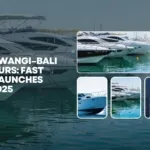Sulfur Miners in Ijen Crater

Deep in the heart of East Java, Indonesia, lies the dramatic and otherworldly Kawah Ijen, home not only to its famous blue fire phenomenon and acidic crater lake but also to a group of unsung heroes — the sulfur miners of Ijen Crater.
Every day, these miners brave one of the harshest working environments on Earth to extract bright yellow sulfur directly from the heart of the volcano. Their story is one of resilience, tradition, and survival — a truly humbling aspect of the Ijen experience that visitors rarely forget.
A Day in the Life of an Ijen Sulfur Miner
Long before the first rays of sunlight reach the crater rim, sulfur miners begin their climb in the dark, often without proper protective gear. Armed with metal poles and simple gas masks — if any at all — they descend into the crater where toxic sulfuric gas billows from active vents near the glowing blue fire.
Using iron rods, they break apart sulfur deposits, which solidify around ceramic pipes designed to channel volcanic gases. These solid chunks are then manually loaded into bamboo baskets, each miner carrying up to 70–90 kilograms (150–200 pounds) of sulfur on their shoulders.
They must then climb back up the steep crater wall and descend the other side to a weighing station — a journey that takes several hours and must be repeated twice a day to earn a modest wage.

The Harsh Realities of Sulfur Mining in Ijen
The sulfur miners face extreme challenges:
-
Toxic Fumes: The air inside the crater is thick with sulfur dioxide gas, which can burn the lungs and eyes.
-
Physical Strain: The terrain is steep, slippery, and treacherous. The loads are incredibly heavy, leading to back and shoulder injuries.
-
Low Wages: Despite the dangerous work, many miners earn as little as $10–$15 USD per day.
For most miners, this job is not a choice, but a necessity to support their families. Many are second- or third-generation miners who have spent their entire lives working in this perilous environment.
Why Sulfur Mining Still Exists at Ijen Crater
Sulfur is a valuable raw material used in:
-
The production of fertilizers
-
Detergents and cosmetics
-
Rubber vulcanization
-
Matches and gunpowder
At Ijen, sulfur is harvested using traditional, manual methods. Despite modern technology being available elsewhere, the low-cost nature of manual labor and limited local opportunities have kept this practice alive.
A Cultural and Ethical Dilemma for Tourists
Tourism at Ijen has grown rapidly due to the popularity of the blue fire tour and the surreal beauty of the crater lake. As a result, visitors often encounter sulfur miners up close — witnessing firsthand the harshness of their labor.
Some tour operators, including Ijen Expedition Tour, now include ethical tourism practices to raise awareness about the miners’ working conditions and promote respectful interaction.
When visiting Ijen:
-
Never photograph miners without their permission
-
Avoid giving handouts, which may cause inequality or tension among workers
-
Support local guides who partner with mining communities
Can Tourism Help Ijen’s Sulfur Miners?
Yes — when done responsibly. Here’s how:
-
Donations & Education: Some organizations and tour companies are working on providing better safety gear and education for miners’ families.
-
Alternative Incomes: Projects involving souvenir-making, guiding, or handicrafts can offer miners other sources of income.
-
Spreading Awareness: Blogging, social media, and ethical storytelling can shine a light on their conditions and influence positive change.
A Visit to Ijen: More Than Just a Volcano Tour
While the natural spectacle of Mount Ijen’s blue flames and turquoise crater lake is breathtaking, the encounter with the sulfur miners adds a deeply human element to the experience.
Travelers often leave Ijen not only with amazing photos but with a sense of humility and respect for those who risk everything to survive on the edge of a volcano.
Plan Your Ethical Visit with Ijen Expedition Tour
Want to witness this incredible journey while supporting responsible tourism? Book your Kawah Ijen Blue Fire Tour with Ijen Expedition Tour. Our experienced local guides provide safe, informative treks that highlight both the natural wonders and human stories of Ijen Crater.
Frequently Asked Questions (FAQ)
Q: Is it safe to visit Ijen Crater during sulfur mining hours?
A: Yes, but visitors must follow guide instructions and wear gas masks when entering the crater.
Q: Can I talk to the miners?
A: Many are friendly, but always ask before taking photos or starting conversations, and respect their work.
Q: What should I bring on the tour?
A: A gas mask (provided by most tour operators), warm clothing, good hiking shoes, and a respectful attitude.
Conclusion
The sulfur miners of Ijen Crater remind us that beneath the beauty of nature, there are real lives shaped by survival and hard labor. Their perseverance is nothing short of heroic. As visitors, we have the opportunity — and the responsibility — to witness their work with respect, compassion, and gratitude.





- Author: ijen









